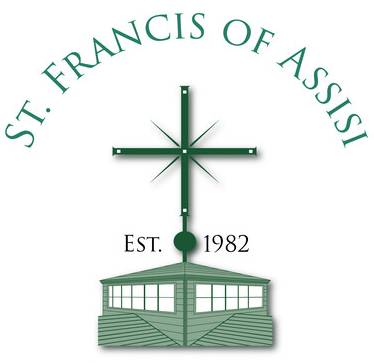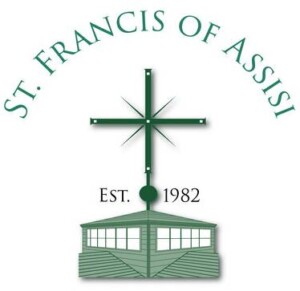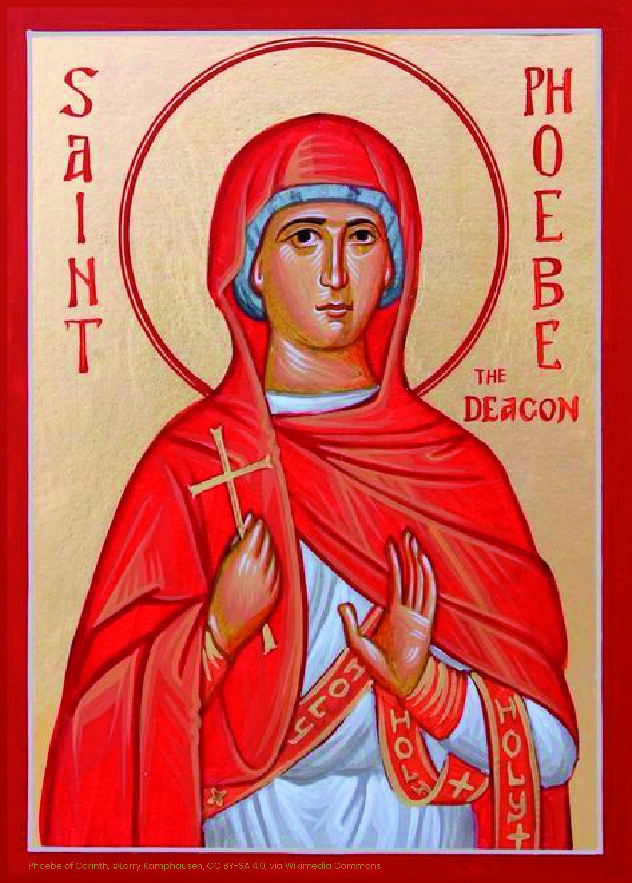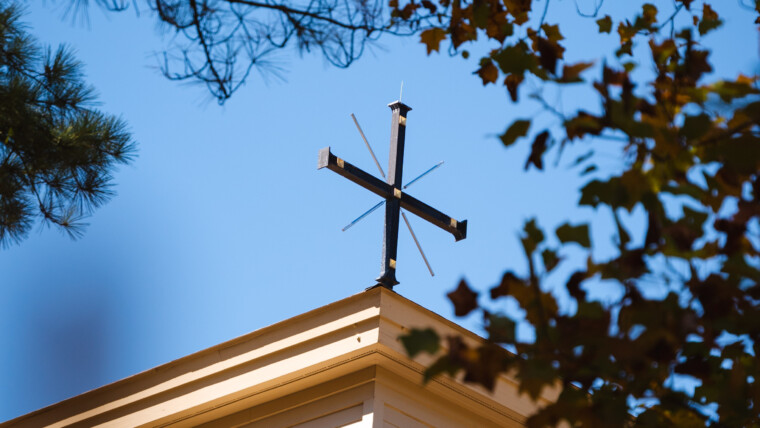It was very early in Catholic Church history when deacons, bishops, and presbyters were understood to hold a special place in the community. According to the Archdiocese of Newark website’s article on the diaconate in the early church, one of the earliest references to deacons occurs in St. Paul’s letter to the Philippians, in which he addresses “all the saints in Christ Jesus who are at Philippi, with the bishops and deacons” (called diakonoi, the Greek plural translation of the word for ‘deacon’ in English translations of the Bible). It was, in fact, the same Paul who recognized Phoebe as a leader and contemporary when he commended her to the church in Rome, introducing her as ‘diakonon,’ (the Greek word that can translate as “deacon”) of the church at Cenchreae, and asks that they “receive her in the Lord” (Romans 16:1-3).
Although scholars dispute whether the office of ‘deacon,’ as it came to be identified later in the first century, was established when Paul wrote his Letter to the Romans, Phoebe, listed to this day as a saint in the Roman Martyrology, has become a symbol and patroness of the movement to prayerfully consider the ability of women to join the permanent diaconate within the Church. This designation seems apropos since she is the only named person, male or female, in the New Testament to be explicitly described as a “deacon.”
Gladys Whitehouse, a long-time active parishioner at St. Francis, is a member of the Discerning Deacons project and is part of the effort “to discuss women in the diaconate and to uplift women’s leadership in the Church.” She has recruited several people at St. Francis as part of the ‘St. Francis of Assisi Phoebe Circle’ to join in a meeting on the third of each month with groups worldwide for a Phoebe prayer night. Gladys states, “Church documentation indicates that until the 11th century, bishops laid hands on the heads of women as they did men, and both functioned as deacons in the Church.” While not well known by most Catholics, Gladys adds, “It was at this time (11th century) that the Church stopped ordaining lay men and lay women to the permanent office of deacon and continued to ordain to the diaconate only those men who were on the path to priesthood.” This practice changed with Vatican II (1962-1965) when the world’s Catholic bishops, by a vote of 2151 to 5, decreed in Lumen gentium that “the diaconate was [to be] restored as a proper and permanent hierarchical rank. With the consent of the Pope, this diaconate can be conferred upon men of more mature age, even upon those living in the married state. It may also be conferred upon suitable young men, for whom the law of celibacy must remain intact.” Women remained excluded from this change despite women’s diaconal work in the Church for many centuries.
The question regarding women in the diaconate resurfaced with a practical application. According to the Discerning Deacons primer on the Catholic Church’s discernment of women and the diaconate, “In some places, like the Pan-Amazonian region, it is common for bishops to delegate women to preside at baptisms and marriages.” Gladys concurs and notes, “Due to the lack of priests, women had the ability given to them by the bishops to baptize, marry, preach, and function as deacons in the Amazon region. The question then arises that if they can do this, why can’t they be ordained as deacons.” The shortage of priests and male deacons and the recognition that women are equal baptismal members of the people of God in service to the faithful may make this an issue for our time.
A recent CARA study in 2021 showed declining numbers in the permanent diaconate in the U.S., mirroring overall trends in the priesthood and religious life. The study indicated that 587 men were ordained to the permanent diaconate in 2020, while 410 retired from active ministry and 378 died that year. This fact, and the recognition of Church history, is where the discernment process for the historical role of women in the diaconate comes into play. Casey Stanton of Immaculate Conception parish in Durham, someone Gladys has worked with and who is co-director of the Discerning Deacons project, describes the role of the Discerning Deacons project this way: “Inspired by Pope Francis’s vision of a synodal church, Discerning Deacons wants to grow the capacity of the U.S. Church and learn how to practice listening and walking together. We want to educate people about the prophetic ministry of the deacon that is connecting the needs of the people and the life of the Church on the ground.”
Gladys Whitehouse says this discernment is not about women priests; that isn’t the goal and can lead to hard feelings on both sides. “Some women feel women should be priests, and they say, ‘Why even bother with deacon? Why can’t we just be priests?’” The concern that this process is a “stepping stone” to the priesthood is one of the objections those opposed to women entering the permanent diaconate have about this process. “This ignores,” laments Gladys, “the role of Mary Magdalene, Lydia, and all the other women noted in the scriptures who supported the apostles and the Christian people in every way they could without becoming priests.” That support became the role in the early Church’s centuries-long practice of the diaconate as a permanent ministry in its own right for both men and women, disconnected entirely from priestly ordination.
Pope Francis established the first ‘Study Commission on the Women’s Diaconate’ in August 2016 to review the theology and history of the ministry of women deacons in the Roman Catholic Church. The commission report was not published, and it is unknown whether the report advocated for or against women’s inclusion in the diaconate. After the Amazonian Synod in the fall of 2019, Pope Francis established a second commission to study the issue in April 2020, and their work continues. Delegates will also discuss the topic during the 2021-2024 Synod, whose first session in Rome begins in October. The questions found in the Instrumentum Laboris, which will guide the delegates’ discussions, highlight the issue with the question: ‘Most of the Continental Assemblies and the syntheses of several Episcopal Conferences call for the question of women’s inclusion in the diaconate to be considered. Is it possible to envisage this, and in what way?’ So, even as the discussion continues, the topic of women in the permanent diaconate remains unresolved but is now being discussed openly. Should the diaconate become open to women, this change will take some time due to the internal work required to re-establish it. “I don’t expect to be a deacon,” says Gladys, “but I hope that the young girls who go to Mass now will someday have the opportunity.”
Every year, during St. Phoebe’s commemoration on September 3, those advocating for the possibility of women’s inclusion in the permanent diaconate try to do something different to uplift Phoebe and continue to discern the prospect of women in the diaconate through prayer. This year, on September 3rd, the goal was to have 100 parishes invite women to share a reflection on that Sunday during the liturgy. Discerning Deacons co-founder Casey Stanton met with Bishop Zarama, and he approved these reflections during liturgies on this topic to teach and give information. They overachieved, and 147 parishes are joining the effort, including St. Francis of Assisi and Immaculate Conception in our Diocese, where these advocates will share these reflections.
Do you want to know more? Gladys encourages those interested to visit the Discerning Deacons project website. Of course, she looks forward to everyone coming to Mass on Sunday, September 3rd, during Labor Day weekend, to hear more in person.
Author: Mike Watson







